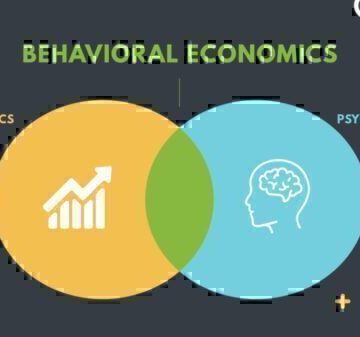Have you heard of the concept of Buy Now Pay Later? The idea is growing in popularity, especially as a way to get something you want today – such as clothing, appliances, electronics or any other consumer items – and delay repayment until later.
While attractive and convenient, especially in times of inflation, there are some things to remember when making a purchase and managing debt at the same time.
What is Buy Now Pay Later?
Buy Now Pay Later arrangements are considered point-of-sale installment loans. Generally, a Buy Now Pay Later offer is a loan that divides payments for what you buy into a number of equal payments over time, with the first payment typically due at the time of your purchase. The rest of the payments are billed to a debit or credit card until your purchase is paid in full.
Buy Now, Pay Later spreads out payments on purchases you can’t necessarily afford at the moment. This may sound like a traditional loan, but there are differences we will explain here. These loans can be interest-free, as long as you keep up with your payments and pay them in full each month. The difference between this and a traditional credit card is a card charges you interest every month you carry a balance. There are exceptions to this rule like zero percent interest credit cards. The key with this type of short-term loan is to understand, from the beginning, if they will work for your larger financial picture.
Buy Now Pay Later can become an issue if not managed correctly. While it is perceived as positive by many, it could add to your financial stress, instead of providing temporary relief from credit card debt. Remember, although payments are pushed down the road, they are still bills you are obligated to pay.
Why is Buy Now Pay Later Attractive?
The pandemic affected everyone and everything in our lives, including shifting how many people make purchases. A 2020 survey showed one of the lasting effects of the pandemic is that it accelerated the shift towards a more digital world and triggered changes in online shopping. Those changes meant people found new ways to shop and retailers introduced new ways to pay for purchases.
The plans often don’t charge interest and can offer easier approval, when compared to traditional credit cards or lines of credit. Also, unlike traditional cards, there is no hard credit pull to qualify for a Buy Now Pay Later, although there may be a soft credit inquiry. In the mind of some consumers, Buy Now Pay Later plans are considered a way to manage credit card debt. As with every debt you have, knowledge and responsibility are key. Stay within your budget and stick to your financial plan.
Even now, when shopping online, you may see Buy Now Pay Later as an option for payment. It seems easy enough. You can complete your purchase right away, often without interest.
On the surface, Buy Now Pay Later offers predictable installment payments over an extended time period, usually between three and 39 months. Increasingly, Buy Now Pay Later has expanded into brick-and-mortar stores as well. This loan can give you access to more of what you want, but it can be deceiving. Depending on the service used for a Buy Now Pay Later provider, loan payments may be reported to credit bureaus. If you are already working on your overall financial health, an added item affecting your credit could impact your household finances.
What Are the Pitfalls of Buy Now Pay Later?
Consumers may take advantage of a Buy Now Pay Later plan, without fully considering the impact on their budget and how they are managing debt. Have you considered the potential problems with Buy Now Pay Later as well as the perceived advantages?
People can sometimes spend more and increase their impulse buying when using Buy Now Pay Later plans. They are also less likely to comparison shop for the best terms, or take a hard look at the deal. Is there a fixed fee? Does the initial interest rate last the entire length of the loan?
Another thing to consider is that Buy Now Pay Later purchases may not qualify for the same fraud or warranty protections as with credit card purchases. In a Credit Karma/Qualtrics survey, 38% of respondents said they missed at least one payment and 72% said they saw a decrease in their credit score. Missed or late payments can mean fees and possible damage to your credit, depending on terms from the provider. Be careful. A Buy Now Pay Later can become a slippery slope, without discipline. The future of your overall money management for your future depends on it.
GreenPath Financial Service
GreenPath, A Financial Resource
If you’re interested in building healthy financial habits, paying down debt, or saving for what matters most, take a look at these free financial tools.
Important Factors to Consider About Buy Now Pay Later
Consumers should be very careful when considering use of these tools. As a general rule, work to plan for purchases within your budget, instead of falling into the, “I want it now” immediate gratification habit. Without discipline, consumers with not-so-great credit can get themselves into a debt spiral that can affect them for many years and derail their goals of managing debt.
If you’ve had trouble in the past keeping up with your finances, you will want to make sure you put a plan in place before considering taking on BPNL debt. According to consumer marketing research, nine out of ten shoppers say they frequently buy items that are not on their shopping lists. For some, items considered for a Buy Now Pay Later purchase are not in their budgets. Unplanned spending can throw a wrench into financial plans. Being in control of day-to-day, month-to-month finances is a key part of your financial confidence and competence.
Some credit card companies extend Buy Now Pay Later as a convenience to cardholders (AMEX Pay It Plan It, Citi Flex Pay, My Chase Plan). Like with any discretionary spending, there is the risk of overspending.
What are Common Challenges Faced by Those Who Buy Now Pay Later?
There can be problems with Buy Now Pay Later plans overusing a credit card or waiting to pay for the item in cash. Getting on a plan for a purchase and paying it off doesn’t help establish and build good credit – a goal for many people when they look at their money management plans. You also miss out on any perks credit cards offer, like cash-back or reward points.
Payments may seem small at the time of your purchase, but they can add up quickly, especially if you are taking on debt you can’t really afford in your household budget. As you would with any purchase, consider how it can affect your home budget.
For many Americans credit card debt has increased, largely due to inflation. Stimulus funds and other temporary resources have gone away. Some consumers are deciding to utilize credit for large discretionary purchases. Instead of resolving money and repayment issues, consumers are potentially digging themselves into a deeper debt hole.
Can Buy Now Pay Later Hurt Credit History?
Unlike applying for a new credit card, Buy Now and Pay Later can be easier to qualify for. Lenders typically don’t perform a credit check or hard credit pull (maybe a soft check) when you apply. For someone that doesn’t have established credit already or who has a less than stellar credit profile, might consider making a purchase in this way more appealing. As with other credit, 30 and 60-day delinquent payments on a Buy Now Pay Later can incur late fees and/or interest. More delinquent accounts may eventually be charged off and sent to collections, damaging your credit and causing you more financial stress.
While Buy Now Pay Later loans are not currently included in credit reports, the three major credit bureaus – Equifax, Experian, and TransUnion – have announced they are looking to change how these loans are reflected on reports.
Each bureau is considering their reporting in slightly different ways:
- TransUnion – They are considering mentioning BUY NOW PAY LATER loans in a separate portion of the credit report. If this idea is finalized, BUY NOW PAY LATER loan history will not be used to calculate credit scores, but will still be included on their credit report.
- Experian – At the beginning of 2022, Experian announced it would launch ‘The Buy, Now Pay Later’ bureau. It plans to collect information about the number of outstanding Buy Now Pay Later loans a person has, as well as their total loan amounts and the status of payments. Experian also says they will, “not include information about Buy Now Pay Later loans in their calculation of core credit scores.”
- Equifax – Equifax has started allowing Buy Now Pay Later providers to report ‘pay-in-4’ loans. According to an Equifax press release, “The new industry code will classify Buy Now Pay Later tradelines including payment history and give Equifax customers and scoring partners the ability to view and decide how to incorporate the information into their decisioning to potentially open up new mainstream financial services opportunities to more consumers.
Get A Free Credit Report
A huge part of any money management plan is understanding your credit and the factors affecting it.
Your credit history is a good snapshot of your financial health. Even if you need to improve your scores, help is available. For answers, take a look at this informative blog take a look at this informative blog from the team at GreenPath Financial Wellness.
Can Buy Now Pay Later hurt credit history?
Unlike applying for a new credit card, Buy Now and Pay Later can be easier to qualify for. Lenders typically don’t perform a credit check or hard credit pull (maybe a soft check) when you apply. For someone that doesn’t have established credit already or who has a less than stellar credit profile, might consider making a purchase in this way more appealing. As with other credit, 30 and 60-day delinquent payments on a Buy Now Pay Later can incur late fees and/or interest. More delinquent accounts may eventually be charged off and sent to collections, damaging your credit and causing you more financial stress.
While Buy Now Pay Later loans are not currently included in credit reports, the three major credit bureaus – Equifax, Experian, and TransUnion – have announced they are looking to change how these loans are reflected on reports.
Each bureau is considering their reporting in slightly different ways:
- TransUnion – They are considering mentioning BUY NOW PAY LATER loans in a separate portion of the credit report. If this idea is finalized, BUY NOW PAY LATER loan history will not be used to calculate credit scores, but will still be included on their credit report.
- Experian – At the beginning of 2022, Experian announced it would launch ‘The Buy, Now Pay Later’ bureau. It plans to collect information about the number of outstanding Buy Now Pay Later loans a person has, as well as their total loan amounts and the status of payments. Experian also says they will, “not include information about Buy Now Pay Later loans in their calculation of core credit scores.”
- Equifax – Equifax has started allowing Buy Now Pay Later providers to report ‘pay-in-4’ loans. According to an Equifax press release, “The new industry code will classify Buy Now Pay Later tradelines including payment history and give Equifax customers and scoring partners the ability to view and decide how to incorporate the information into their decisioning to potentially open up new mainstream financial services opportunities to more consumers.
What to consider when looking at a Buy Now Pay Later plan?
- Think hard about your purchase – When you step up to make your purchase, you may find your Buy Now Pay Later lender will allow you to spend more than you had planned on spending. You may “qualify” to spend a higher amount, but should you? Some consumers typically spend more using these plans than if they had to pay the full amount of their item at the time of purchase.
- Look at your budget and your income – When you look at your household finances, know definitively what cash you have coming in monthly to cover your debts. Once you get a handle on your debt, you can make more informed decisions on whether you can afford to take on more monthly payments.
- Understand your terms – Before signing up for a Buy Now Pay Later, make sure you understand the terms of the loan. Many times, you can find this information on the lender’s website or call the lender to ask. Will late or missed payments be reported to a credit bureau? Is there a fee for late payments? Understanding what you are getting yourself into can reduce financial stress and help keep you on track. There can be real Problems with Buy Now Pay Later plans if you don’t consider the potential impacts on your long-term debt management objectives.
- Only shop with trusted retailers – If you decide to go with a Buy Now Pay Later plan, make sure you only deal with reputable retailers. Which Buy Now Pay Later provider a retailer partners with can vary. Understand which entity is behind a Buy Now Pay Later plan. When it comes to online vendors, it pays to be mindful of the financial company you keep. Do thorough research before accepting Buy Now Pay Later.
Steps to Take if Facing
Buy Now Pay Later Repayment Challenges
GreenPath counselors speak daily with people looking to handle past due debt, which contributes to their overall stress and financial challenge. We encourage everyone to consider their overall debt picture before entering into a Buy Now Pay Later plan. Remember Buy Now Pay Later is short-term financing – a loan allowing consumers to make purchases immediately and pay for them later.
The challenge is when “Later” comes and you haven’t fully prepared for it in your household budget, the payments can cause problems.
GreenPath Financial Service
Free Debt Counseling
Take control of your finances, get tailored guidance and a hassle-free budgeting experience. GreenPath offers personalized advice on how to manage your money.
If you’re unable to make payments:
- Talk to your lender as soon as possible. Determine if you are able to make a partial payment.
- Contact a trusted non-profit financial counseling agency like GreenPath for a financial assessment. We can review your income, expenses and budget to ensure you are able to manage the Buy Now Pay Later debt as well as cover household essentials. We can also review the Buy Now Pay Later terms and help you develop a repayment plan.
- Consider a Debt Management Plan to help stay on top of unsecured debt like a Buy Now Pay Later plan. Managing debt takes planning and more importantly, the willingness to follow through to reach your financial goals.
Everyone receives an initial free financial counseling session with certified counselors who lend an emphatic ear, look at your entire financial picture and help you develop a personalized plan that works for you and your particular situation – actively managing your financial health, reducing financial stress and keeping you on track for your bright future.










